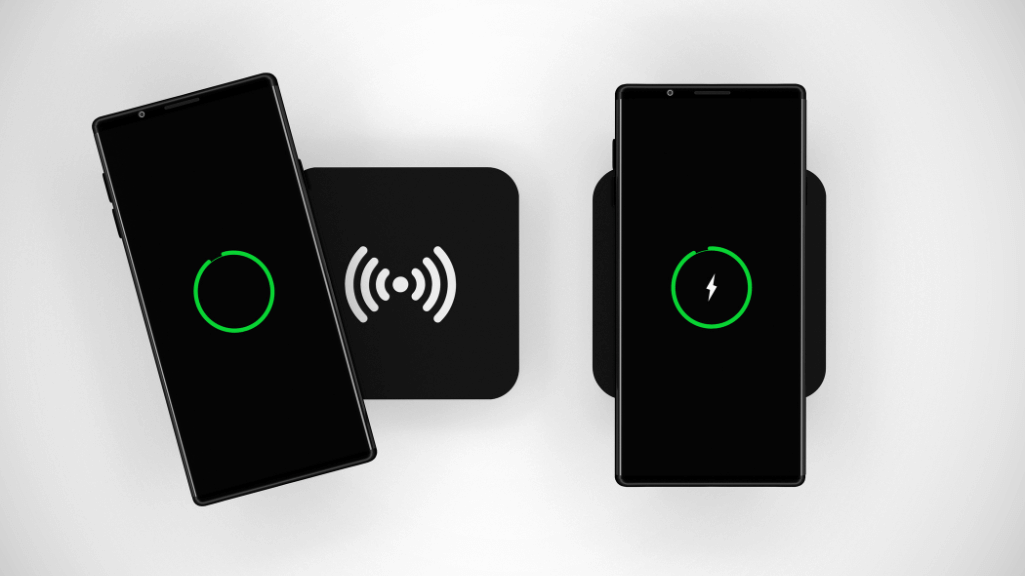Why is My Xfinity Wi-Fi so Terrible? Avoid Frustration with these Quick Fixes!
The reason why your Xfinity wifi is so terrible could be due to issues with signal interference or a high number of devices connected to the network. This can lead to slower internet speed and poor connection quality.
Xfinity wifi, provided by Comcast, is a popular and widely used internet service that allows users to connect to the internet wirelessly. However, many xfinity wifi users often encounter frustrating issues with their connection, such as slow internet speed and unreliable connectivity.
There are various factors that can contribute to the poor performance of Xfinity wifi, including signal interference and the number of devices connected to the network. By understanding the root causes of these problems, users can take steps to improve their internet experience and enjoy a more stable and reliable connection. We will delve deeper into why your Xfinity wifi might be so terrible and provide actionable tips to enhance your overall usage experience.

Understanding The Common Causes Of Poor Xfinity Wifi Performance
If you find that your Xfinity wifi is performing poorly, several common causes may be to blame. One possible issue is interference from other devices, which can disrupt the Wi-Fi signal. Additionally, the distance between your device and the Wi-Fi router may affect the signal strength.
If your Wi-Fi router is far away, the signal may weaken, resulting in a slow or unreliable connection. Another factor to consider is obstructions in the signal’s path. Walls, floors, and other physical barriers can hinder the Wi-Fi signal, leading to reduced performance.
Identifying and addressing these common causes can help improve your Xfinity wifi experience.
Quick Fixes To Improve Your Xfinity Wi-Fi Connection
Is your Xfinity wifi connection consistently disappointing you? Try these quick fixes to address the issue. Start by rebooting your Wi-Fi router, a simple step that can often resolve connectivity problems. Repositioning your router might also help, ensuring better coverage throughout your home or office.
Additionally, minimize interference from other devices, such as cordless phones or baby monitors, which can affect your Wi-Fi signal. Another important step is to update your router’s firmware regularly to ensure it is functioning at its best. Finally, don’t forget to experiment with changing Wi-Fi channels, as this can sometimes improve your connection quality.
By implementing these simple fixes, you can experience a significant boost in your xfinity wifi performance.
Why is Xfinity WiFi so bad right now?
If you’re experiencing poor Xfinity WiFi performance, there could be a variety of reasons contributing to this issue. First, consider the possibility of network congestion. With more people working from home and utilizing high-bandwidth activities like video conferencing and streaming, the network can get overloaded, leading to slower speeds for everyone. This is especially true during peak usage hours when many people are online at the same time.
Another factor could be the age and capability of your hardware. Older modems and routers may not be equipped to handle the demands of modern, high-speed internet. Even if your service plan promises high speeds, your actual experience may vary based on your hardware’s limitations. Additionally, the distance between your device and your router can significantly impact your connection speed. Obstructions like walls, furniture, or other electronic devices can also interfere with your WiFi signal.
Data caps are another factor to consider. Many ISPs, including Xfinity, have monthly data limits, and exceeding these can result in slower speeds or additional fees. If you’ve been doing a lot of data-intensive activities, such as streaming high-definition videos or downloading large files, you might have hit your data cap, thus affecting your internet speed.
Furthermore, external factors like weather conditions or local outages can temporarily affect service quality. Severe weather can damage infrastructure or interfere with the signals between local hubs and your home, leading to poorer performance. In some cases, planned or unplanned maintenance work can also result in temporary service interruptions or slowdowns.
How do you fix Xfinity Wi-Fi to be better?
Improving your Xfinity WiFi performance can require a multi-step approach that addresses various aspects of your network and hardware. One of the first things you might want to do is perform a speed test to check your current internet speed. This will give you a baseline against which you can measure any improvements.
To address the issue of network congestion, you might consider changing the channel on your WiFi router. Routers often default to certain channels, and if multiple routers in your area are on the same channel, it can cause congestion and slow down your internet. You can typically change the channel by logging into your router’s admin settings. Most modern routers have an auto-select feature that picks the least congested channel.
Another important aspect to consider is the placement of your router. The WiFi signal can degrade if there are too many physical obstructions between your device and the router. Try positioning the router in a central location within your home, elevated from the ground, and away from walls or other large objects. This can help distribute the WiFi signal more evenly throughout your living space.
Upgrading your hardware can also make a noticeable difference. If you’re using an outdated router or modem, it may not be capable of delivering the speeds that your Xfinity plan offers. Check the specifications of your hardware and consider upgrading to a more current model that can handle higher speeds. Additionally, some advanced routers offer features like Quality of Service (QoS) that allow you to prioritize certain types of traffic, ensuring better performance for activities like streaming or gaming.
Sometimes, the issue might be with your device rather than the network itself. Ensure that your device’s drivers are up-to-date and that you don’t have software running in the background that might be using up bandwidth. Running security scans can also rule out the possibility of malware affecting your connection speed.
Data Cap
If you’ve exceeded your data cap, you’ll either need to manage your data usage more efficiently or consider upgrading to a plan with a higher data limit. ISPs often slow down your internet speed once you’ve reached your monthly data allowance, so keep an eye on your usage to prevent this from happening.
Lastly, if you’ve tried all these steps and are still experiencing issues, it might be time to reach out to Xfinity customer support. They can perform more specialized diagnostic tests to determine if the issue might be on their end or provide specific solutions tailored to your situation.
By systematically addressing each of these elements, you stand a good chance of improving your Xfinity WiFi performance, providing a more consistent and faster internet experience.
Advanced Tips To Boost Xfinity Wifi Signal Strength
Are you frustrated with your Xfinity wifi? Boost signal strength with advanced tips. Upgrade to a higher-powered router. Extend your network using range extenders or mesh systems. Optimize your wifi settings for better speed and performance. Consider using wired connections for data-intensive activities.
Enjoy a seamless browsing experience without any lag or dropouts. Improve your internet connectivity today with these practical solutions. Say goodbye to a terrible Wi-Fi experience and hello to a reliable and robust network. Upgrade, extend, and optimize for a better online experience.
It’s time to take control of your Xfinity wifi.
Frequently Asked Questions Of Why Is My Xfinity Wifi So Terrible?
Why Is Xfinity Wi-Fi So Spotty?
Xfinity Wi-Fi can be spotty for several reasons. Firstly, it could be due to network congestion, where too many people are using the same Wi-Fi channel in your area. This can lead to slower speeds and intermittent connections. Secondly, the distance between your device and the Wi-Fi router can also affect the signal strength, especially if there are walls or obstacles in between.
Another potential cause is outdated router firmware or hardware, which may not efficiently handle the demands of multiple devices. Environmental factors such as interference from other electronic devices or physical obstructions can also disrupt the Wi-Fi signal. To improve the reliability of your Xfinity wi-fi, consider optimizing your Wi-Fi settings, using a Wi-Fi extender or repeater, or contacting Xfinity for further assistance.
Why is my Xfinity WiFi speed slower than what I’m paying for?
If you’re experiencing slower speeds than what your Xfinity plan advertises, there are various factors that can contribute to this discrepancy. It’s worth noting that advertised speeds are usually ‘up to’ a certain level, meaning they’re the maximum you could expect under optimal conditions, but not guaranteed at all times.
First, consider the possibility of network congestion, especially during peak hours when many people are online. This can slow down your internet speed as the bandwidth is divided among multiple users. Your geographical location can also play a role; sometimes ISPs can’t deliver maximum speeds in certain areas due to limited infrastructure.
Another consideration is your hardware. Older modems and routers may not be capable of handling higher speeds, so even if your plan allows for faster browsing, your hardware might be the bottleneck. If your hardware is outdated, consider upgrading to a modem or router that can support the speeds you’re paying for.
How can I boost the WiFi signal strength of my Xfinity network?
If you’re experiencing a weak WiFi signal, it can lead to frustratingly slow speeds and unreliable connections. Improving signal strength can often make a noticeable difference in your internet experience.
One of the first things you can do is evaluate the positioning of your router. The router should ideally be placed in a central location in your home, elevated off the ground, and away from physical obstructions like walls or furniture. A central location ensures that the WiFi signal is evenly distributed throughout your home.
Next, consider changing your WiFi channel. Many routers default to specific channels that can become congested if multiple networks in your area are using them. You can switch to a less crowded channel by logging into your router’s admin settings. Some routers even offer an “auto” option that picks the least congested channel.
If you’ve already optimized your router’s position and channel, the next step might be to invest in hardware upgrades. A mesh WiFi system can extend the reach of your network without degrading the signal quality, making it ideal for larger homes or areas with multiple floors. Alternatively, WiFi extenders can also help boost the signal but are generally considered less effective than mesh systems.
Conclusion
To sum up, dealing with a slow and unreliable Xfinity wifi can be frustrating, but understanding the possible reasons behind the issue can help you find ways to improve your internet connection. Start by assessing the placement of your modem and router, ensuring they are away from interference sources and properly positioned.
Consider upgrading your internet plan to a higher speed if necessary. Additionally, regularly restarting your devices, clearing caches, and updating firmware can help optimize your connection. Lastly, if all else fails, don’t hesitate to contact Xfinity customer support for assistance.
Remember, a fast and reliable internet connection is essential in today’s digital age. By implementing these suggestions, you can work towards enhancing your xfinity wifi experience and enjoying seamless connectivity for all your online activities.




